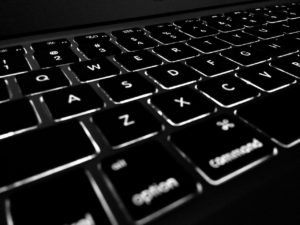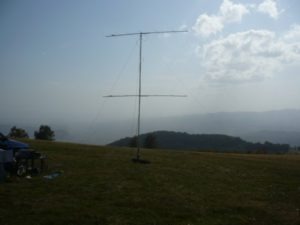Program je určený pre VKV súťaže, a to ako na priame použitie počas contestu, tak aj na zadávanie a vyhodnocovanie dát po skončení súťaže. Pri jeho vývoji sa využili dlhoročné skúsenosti operátorov staníc OK1KRA a OK2KKW. Autor však rád privíta pripomienky a návrhy na zlepšenie.
Na otázku, prečo je program v angličtine, je nasledovná odpoveď: angličtina je medzinárodným jazykom nielen rádioamatérov, ale aj programátorov. Niektoré pojmy z prevádzky nemajú české ekvivalenty, nepoužívajú sa, alebo sú príliš dlhé, nehovoriac o potrebe spravovať viac jazykových verzií programu. Navyše, vzhľadom na známe problémy s češtinou, najmä v operačnom systéme MS-DOS, bolo rozhodnuté používať angličtinu.
Verím, že tento český návod a česká nápoveda umožní používať program aj amatérom, ktorí neovládajú úplne angličtinu. Súbory nápovedy (vus.hlp, vusa.hlp, vusc.hlp) je možné upravovať bežnými editormi a dopĺňať podľa potreby o ďalšie informácie.

2. Technické podmienky
Program je určený pre osobné počítače typu PC s operačnými systémami MS-DOS 5.0 a vyššími, Windows 3.11, alebo Windows 95/98/Me.
V systémoch Windows NT/2000 nie je možné používať funkcie pre Morse, zvukovú kartu, rotátor, sieť a packet rádio.
Pred spustením je nutné ukončiť rezidentné antivírusové programy, ktoré by mohli nepriaznivo ovplyvňovať chod programu.
Tiež sa odporúča vypnúť šetrič obrazovky a funkciu šetrenia batérie na notebookoch.
V najhoršom prípade je možné spustiť Windows 95/98/Me v MS-DOS režime.
Požiadavky na PC:
- Procesor: minimálne 80386, pri použití Morse a rotátora aspoň 486/66 DX2
- Pamäť RAM: minimálne 3 MB + pamäť pre zvukové súbory, ak sú používané
- Voľné miesto na disku (HDD): približne 4 MB
- Video karta: VGA
- Porty:
- 1× sériový RS-232C (COM)
- 1× paralelný Centronics (LPT)
- Zvuková karta:
- SoundBlaster, SoundBlaster 16, SoundBlaster Pro, SoundBlaster Pro2, AWE 32 a kompatibilné
- Sieťová karta: akákoľvek typu Ethernet alebo Token Ring s ovládačom pre Windows 95/98/Me
Požiadavky na operačnú pamäť a miesto na disku sa môžu mierne líšiť v závislosti od veľkosti databáz a počtu spojení.
Pri použití zvukovej karty je potrebné pripočítať veľkosť nahrávaných WAV súborov ako k pamäti RAM, tak aj k potrebnému miestu na disku.
Autor uvítá všetky informácie týkajúce sa používania programu na rôznych typoch počítačov.

Bezpečnosť dát
Program je navrhnutý predovšetkým pre priamu obsluhu operátorom, teda nepoužíva sa denník vedený na papieri.
Dáta sú zabezpečené tak, aby sa nestratili ani pri náhlom páde počítača z akéhokoľvek dôvodu.
Maximálna strata môže predstavovať len jediné práve rozpracované spojenie.
Ak k takejto situácii dôjde, stačí po reštarte počítača jednoducho spustiť program znova a zadať názov súťaže.
Program následne zreštauruje dáta (objaví sa hlásenie „Recovering…“) a je možné pokračovať v práci.
Počas súťaže je navyše možné v čase voľnej prevádzky (napr. pri výzve CQ) vytvárať záložné kópie aktuálneho stavu na disketu pre prípad vážnej poruchy pevného disku.
Denník (log)
Denník je vedený klasickým spôsobom, t. j. spojenia sa zadávajú priebežne v čase, ako boli uskutočnené na rôznych pásmach.
Filozofia je podobná ako napríklad v programe pre KV súťaže K1EA.
Každý riadok denníka je rozdelený na jednotlivé polia:
- čas,
- volačka (znak stanice),
- odoslaný report,
- číslo spojenia,
- prijatý kód,
- prijatý lokátor,
- body,
- azimut.
Všetky polia, okrem čísla spojenia, bodov a azimutu, je možné priamo meniť.
Čísla spojení je možné zmeniť pomocou špeciálnych príkazov.

Hlavné funkcie programu
Ak by sme chceli vypísať všetko, čo tento program dokáže, bolo by to na veľa strán.
Tu je aspoň stručná charakteristika tohto výborného programu:
- Freeware – nie je potrebná registrácia ani platenie poplatku
- Možnosť práce on-line (počas súťaže) aj off-line (zadávanie spojení z papiera)
- Voľný editor všetkých spojení
- Podpora všetkých VHF/UHF/SHF pásiem súčasne na jednom počítači
- Veľká kapacita operačnej pamäte – niekoľko tisíc spojení, všetky databázy v pamäti
- Vysoká bezpečnosť uloženia dát v prípade hardvérovej alebo softvérovej poruchy
- Databáza staníc a lokátorov z predchádzajúcich súťaží
- Podpora EDI súborov pre vstup aj výstup
- Podpora tlače a databázy QSL lístkov
- Podpora ADIF súborov pre upload na eQSL.cc – elektronické QSL
- Kľúčovanie TRXu zo sériového aj paralelného portu s elektronickým bugom a dvojpádlovou pastičkou
- Podpora zvukovej karty pre SSB výzvu
- Ovládanie rotátora s jednoduchým hardvérovým rozhraním
- Podpora packet rádio modemu
Rozšírené možnosti:
- TNC5 – monitorovanie DX Clusteru počas súťaže
- Podpora siete (Ethernet, Token Ring) – zdieľanie logu medzi neobmedzeným počtom počítačov
- Packet rádio server – zdieľanie packet modemu v sieti
